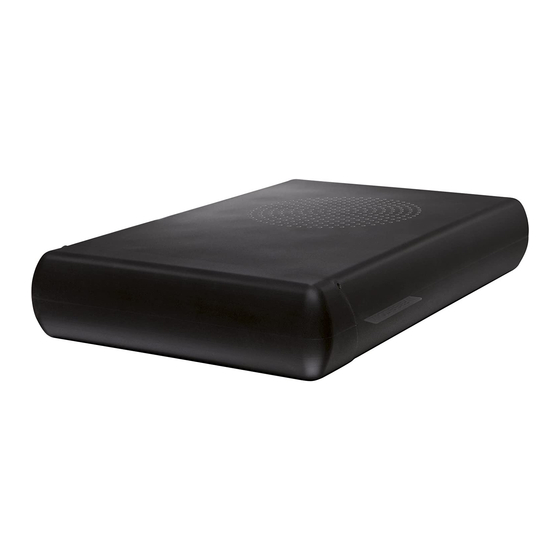Freecom NETWORK DRIVE XS Gebruikershandleiding - Pagina 12
Blader online of download pdf Gebruikershandleiding voor {categorie_naam} Freecom NETWORK DRIVE XS. Freecom NETWORK DRIVE XS 20 pagina's. External hard drive / 3.5" / usb 2.0
Ook voor Freecom NETWORK DRIVE XS: Gegevensblad (2 pagina's), Gegevensblad (2 pagina's)

Freecom Hard Drive XS
Example for different partitions with different file systems on one Freecom
EN
Freecom Hard Drive XS
5
Total
size of
Freecom Hard Drive XS
Note: On NTFS formatted hard disks can only be written under Windows
000 / XP / Vista. Under MacOSX data can only be read.
The example above is a good solution for Windows 2000 / XP / Vista users who some-
times exchange data with Macs.
For storing the data under Windows 2000 / XP / Vista both partitions can be used. As the
NTFS file system can only be read by Mac data to be used on these operating systems
must be stored on the FAT32 partition.
Please follow the steps below to adapt the Hard Drive XS for your needs.
5. Partitioning your Freecom Hard Drive XS under Windows 000/XP/
Vista
5..1 Deleting a partition on the Freecom Hard Drive XS under Windows
000/XP/Vista
1. Click with the right mouse button on the "My Computer" icon on your desktop.
2. Select the option "Manage".
3. Select the option "Storage" -> "Disk Management".
4. Choose your external Freecom Hard Drive XS and right-click on the partition.
5. Select "Delete Partition" and confirm by clicking on "Yes". The partition will be
deleted now.
5.. Creating a partition on the Freecom Hard Drive XS under Windows
000/XP/Vista
The following steps will guide you through the process of creating partitions on your
Freecom Hard Drive XS. After this procedure your Freecom Hard Drive XS will be ready
for use and it will be allocated a drive letter.
1. Click with the right mouse button on the "My Computer" icon on your desktop.
2. Select the option "Manage".
3. Select the option "Storage" -> "Disk Management".
4. Choose the hard disk, which is "unallocated". Ensure that the entire drive is "unal-
located".
1
File system
500 GB
NTFS
470 GB
FAT
30 GB
